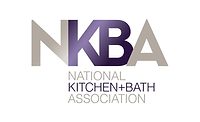5 Ways Technology Can Improve Your Retail Business

Want to make 2023 the year your retail flooring business is more profitable, more efficient and ready for growth? In the first edition of our new technology series, QFloors President Chad Ogden shares his five ways technology can improve your business. This is an excerpt of a longer conversation we had via the TalkFloor podcast. You can listen to it here.
1. Use a Flooring-Specific Business System
There are probably somewhere in the neighborhood a neighborhood of 6,000 to 8,000 dealers who are not using a flooring-specific business system. They're using something like QuickBooks or Excel, and a lot of times a lot of those 6,000 to 8,000 dealers are a little bit smaller. However, I routinely see a dealer who is doing $3 to $4 million on pen and paper. It blows me away that that they're losing so many efficiencies and so much money by doing that. The bigger you get, the bigger the hit if you don't have a floor covering-specific business system. So start here.
You have to have the right tool to perform the right task. It does things that are going to save you a lot of time, like connections with suppliers for product catalogs and being able to easily calculate the profitability of the job before you sell the job.
We've done a study recently basing it on a $1 million floor covering store, and you don't use floor covering-specific software, it will actually cost the dealer $40,000. Most of it is in extra time for people. They're having to hire more people instead of using technology to solve their problems.
2. Choose Tools That are Easy to Use
If the tool is too hard to use, that can defeat the purpose because it takes too long to train, too long to do a certain task. So you're ending up in the same place where it's not really streamlining or saving you money. If you just ask other people in the industry, you can find out pretty quickly from other people that are using a lot of different products.
3. Know Your Profit Margin
Before you ever sell a job you have to know what the profit margin. It's critical, extremely critical, that you know how much to charge the customer and how much you're going to make. For a lot of companies, especially ones that are not on floor covering-specific software, it is extremely difficult. Maybe the owner can do it really quickly, but when you start hiring people, they're going to make mistakes and you're going to start losing money.
4. Understand Your Job Costs
The right software can help you keep track of the cost of a project. You have to know what you've actually made. So between your proposal and the final installation, maybe the price on the product changed slightly, or maybe there was more labor to this job than what you originally thought. You're not charging the customer for it, or you know all these kind of things that dynamically change as you're doing the job. At the very end, knowing exactly with the freight included with the products, the labor, everything that you got in there, including credit card charges, if you've got those, will help you get accurate job costs.
5. Create Accurate Financial Statements
The end game to all of this is knowing if you made or lost money. You have to take into account everything in your business: all your fixed costs, all your variable costs, things outside that you don't control. A business system can help you do this. Unless you're an accountant and know how to manually manipulate the numbers within QuickBooks, you're not getting the right numbers, and with it comes with profit and loss statements, balance sheets—all the things we use to monitor the health of a business.
Most stores in our industry should be doing monthly, or at least quarterly, financial statements. Start with trying to do quarterly first; monthly might be a little bit daunting. But if you can do it quarterly, that's a good first step.
Looking for a reprint of this article?
From high-res PDFs to custom plaques, order your copy today!






